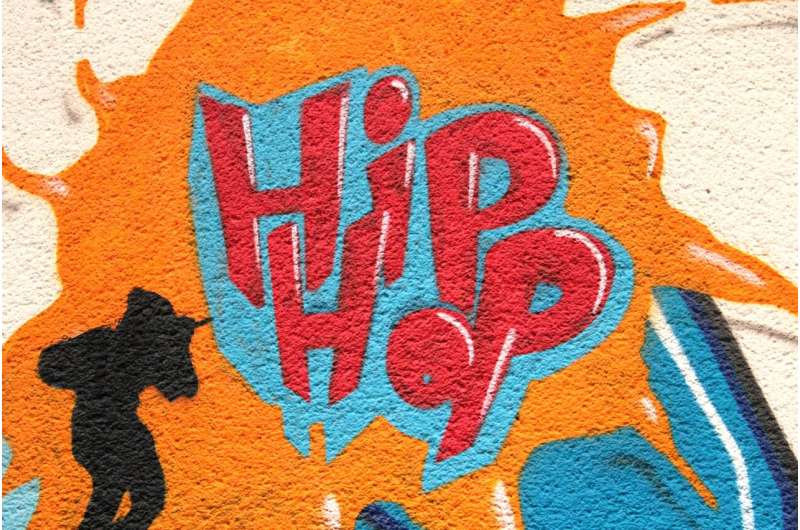This article has been reviewed according to Science X's editorial process and policies. Editors have highlighted the following attributes while ensuring the content's credibility:
fact-checked
trusted source
proofread
Hip hop dancing promotes awareness of disability rights and performance equality, study shows

Hip hop dancing can be used to spread awareness of disability rights and help those with sight problems to participate in performance equally, a new study says.
Breakin'—which is commonly referred to as breakdancing—is good for mobility and helps promote balance and stability as well as well-being.
It also offers an important opportunity for people to slow down and connect with their inner selves, their feelings, their bodies, and their peers, according to researchers. It has been used to treat symptoms of depression, anxiety, and PTSD.
Nathan Geering, Artistic Director and creator of The Rationale Method, and Dr. Simon Hayhoe, from the University of Exeter, analyzed the impact of an educational technology and choreography project called Sound Pad. It involved Breakers, choreographers, and those with visual impairments working collaboratively to develop a form of participatory dance education.
The project was set up to encourage people with visual impairment to move more, to feel more included in mainstream dance culture, and to develop a greater sense of inclusion. Other aims were to give participants a greater understanding of dance as an art form and the career pathways for people with disabilities as choreographers and music directors.
As part of the project, dancers performed the work of visually impaired choreographers in Sheffield. Those involved with visual impairments had watched three different dance styles without musical accompaniment and then answered specific questions about the accessibility of each form of dance. The participants' answers seemed to confirm that Breakin was the most accessible of these three forms.
All three phases of practice took place during sessions at the Sheffield Royal Society for the Blind, SNS Bradford, and 108 The Moor in Sheffield. The sessions were all led by Nathan Geering and included five children and sixteen adult participants.
Dr. Simon Hayhoe said, "The Sound Pad project has created a unique form of co-creating, choreographing, and learning about dance sequences through imagining mobility and space and through the co-creation of mobility. All the participants developed new negotiated forms of information that helped them bond, share ideas, and subsequently evolve a form of mutual inclusive technical and inclusive capital."
"Visually impaired participant choreographers showed that it was possible to imagine dance sequences creatively through touch, sound, and residual vision and then communicate this vision to sighted dancers in an effective way. Participants also found other uses for the Sound Pad and said it could be used to help enhance movement comprehension for mainstream sport, martial arts, fitness, and fashion."
"There were challenges to this process, and some dancers felt it was initially difficult to understand if what they imagined was the same as the participant choreographer. However, this confusion quickly dissipated as the sessions progressed, and both the participant dancers and choreographers appeared to evolve mutual respect and comprehension of each other's abilities. The technology and the rationale method of describing onomatopoeic sound and movement therefore seems to have particularly helped this process of communication."
More information: Nathan Geering et al, The Sound Pad Project, Music for Inclusion and Healing in Schools and Beyond (2023). DOI: 10.1093/oso/9780197692677.003.0012
Provided by University of Exeter




















